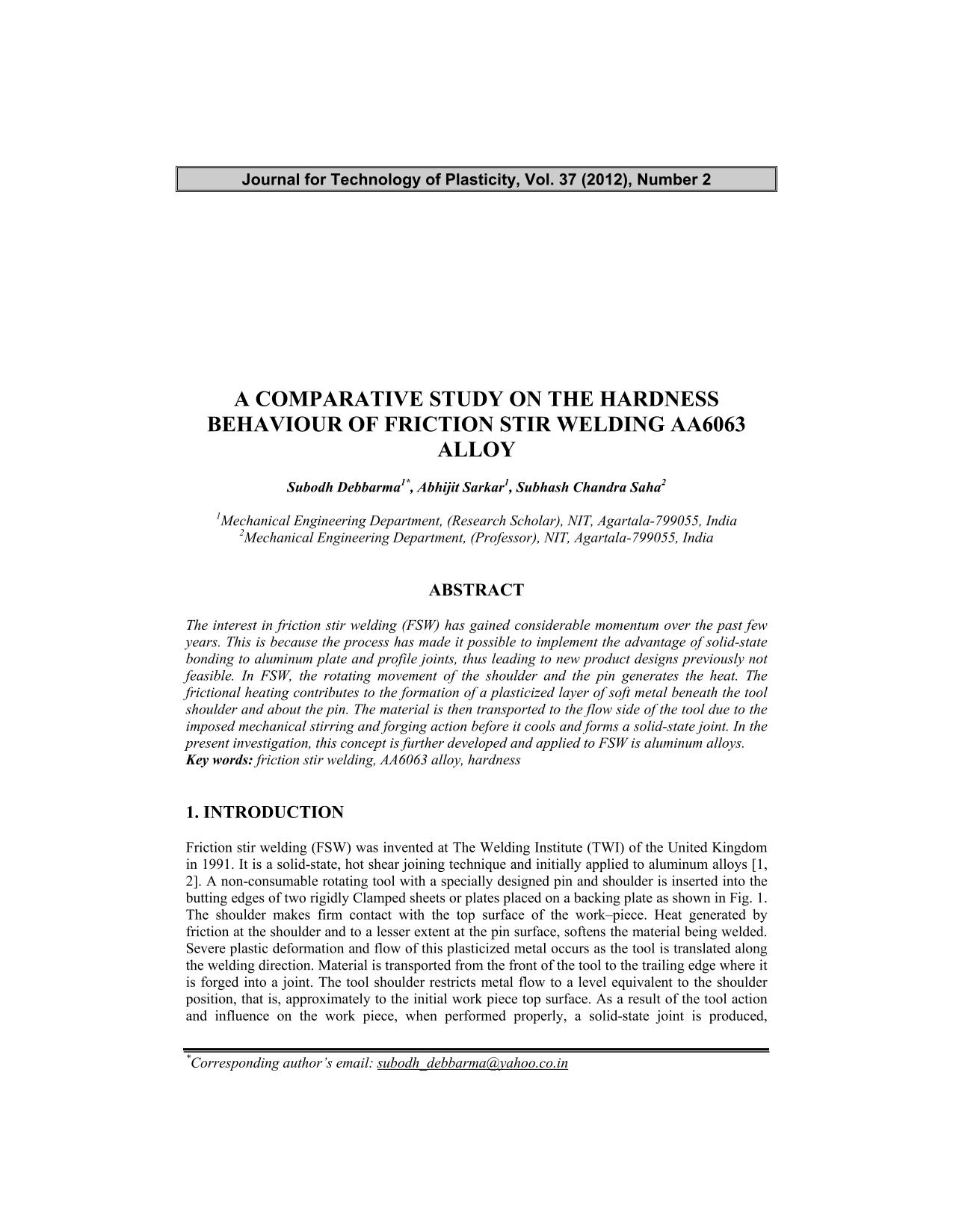A comparative study on the hardness behaviour of friction stir welding AA6063 alloy

Published 2012-12-28
abstract views: 14 // Full text article (PDF): 5
Keywords
- friction stir welding,
- AA6063 alloy,
- hardness
How to Cite

This work is licensed under a Creative Commons Attribution 4.0 International License.
Abstract
The interest in friction stir welding (FSW) has gained considerable momentum over the past few years. This is because the process has made it possible to implement the advantage of solid-state bonding to aluminum plate and profile joints, thus leading to new product designs previously not feasible. In FSW, the rotating movement of the shoulder and the pin generates the heat. The frictional heating contributes to the formation of a plasticized layer of soft metal beneath the tool shoulder and about the pin. The material is then transported to the flow side of the tool due to the imposed mechanical stirring and forging action before it cools and forms a solid-state joint. In the present investigation, this concept is further developed and applied to FSW is aluminum alloys.

